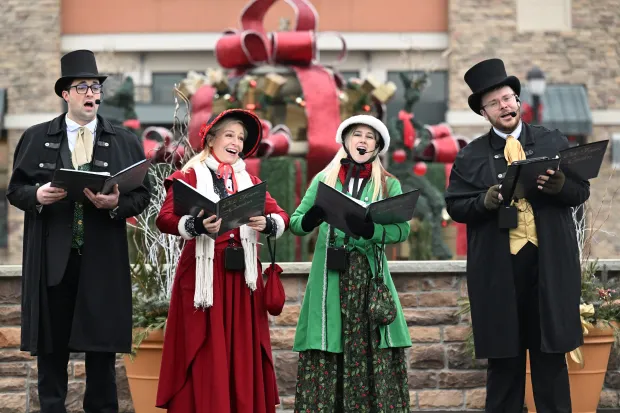The tradition of carolers, often associated with the festive season, embodies a rich history of spreading joy through music. From ancient origins to modern-day celebrations, caroling has evolved into a cherished practice worldwide, uniting communities and fostering holiday spirit.
Ancient Origins and Evolution:
Caroling traces its roots back to ancient pagan rituals where songs were sung during winter solstice celebrations to ward off evil spirits and welcome the rebirth of the sun. With the spread of Christianity, these pagan songs gradually incorporated religious themes, becoming hymns sung during Christmas celebrations.
Medieval Europe:
During the Middle Ages, caroling took on a more structured form as church choirs and groups of minstrels traveled from house to house singing songs of praise and goodwill. This practice helped to reinforce community bonds and spread religious teachings among the population.
Victorian Era Revival:
The Victorian era saw a resurgence of interest in Christmas traditions, including caroling. Influential figures such as Charles Dickens, through his writings, popularized the idea of Christmas as a time for family gatherings and charitable acts, with caroling playing a central role in these festivities.
Traditional Songs and Themes:
Carols often feature themes of joy, peace, and goodwill, with popular songs including classics like “Silent Night,” “Deck the Halls,” and “Hark! The Herald Angels Sing.” These songs not only celebrate the religious aspects of Christmas but also reflect cultural traditions and seasonal imagery.
Global Spread and Cultural Adaptations:
As European settlers migrated across the globe, they brought caroling traditions with them, adapting them to local customs and languages. Today, caroling is practiced in diverse cultural contexts, with variations in songs and rituals that reflect regional influences while preserving the core spirit of spreading cheer through music.
Modern-Day Practices:
In contemporary times, caroling continues to thrive as a beloved holiday tradition. Groups of singers, often dressed in festive attire, visit neighborhoods, shopping centers, and hospitals to serenade people with seasonal melodies. Some communities organize official caroling events, complete with choir performances and sing-along sessions that engage people of all ages.
Impact and Community Spirit:
The tradition of caroling goes beyond mere entertainment; it fosters a sense of community, bringing people together in shared moments of joy and reflection. It offers an opportunity for individuals to connect with their neighbors, lift spirits during the holiday season, and spread messages of hope and unity.
Conclusion:
Caroling remains a cherished tradition that transcends generations and cultures, embodying the essence of Christmas spirit through music. Whether singing centuries-old hymns or contemporary interpretations, carolers continue to evoke feelings of warmth, nostalgia, and communal celebration, making it a cherished part of holiday festivities worldwide. As we embrace the tradition of caroling, we not only honor its historical significance but also perpetuate its timeless ability to bring happiness and harmony to all.
